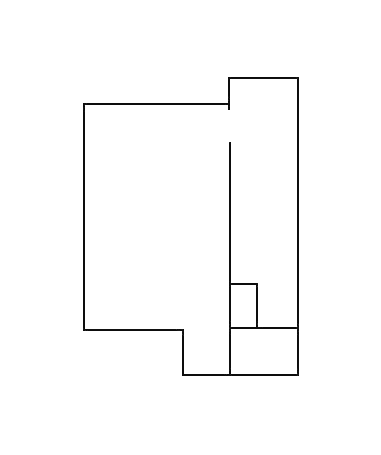JANA BREVICK | METAL GURU, IS IT YOU?
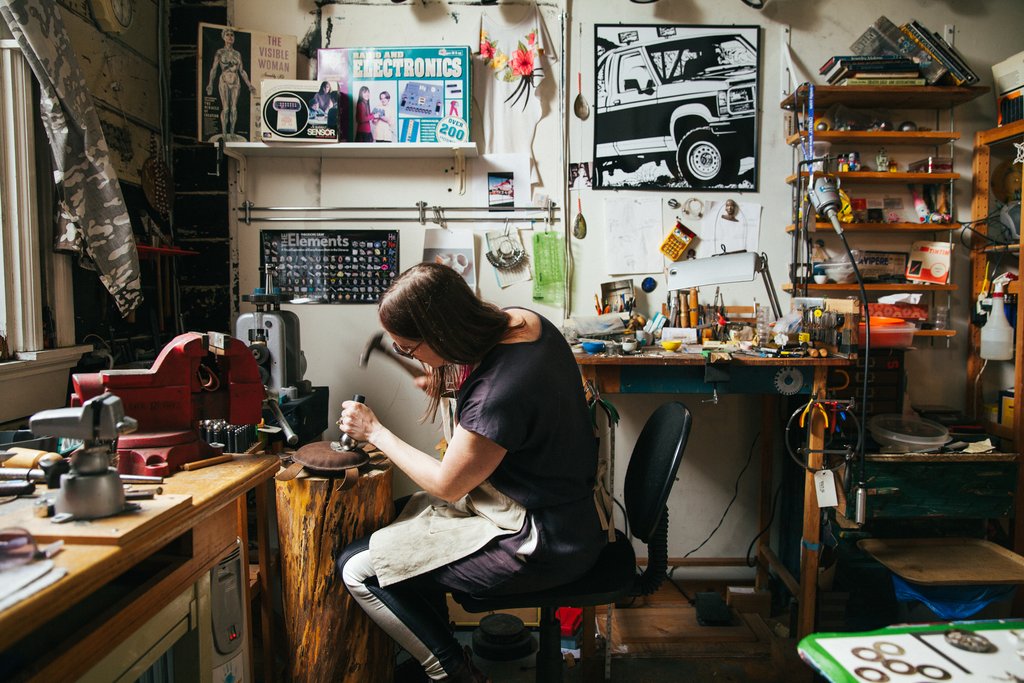
Interview By Olivia McCausland | Photographs by Andrew Waits
How would you describe your aesthetic?
I’ve been thinking about that kind of a lot right now, because I have been asked to do a solo show at Bellevue Arts Museum. That’s coming up in like 5 minutes—April—I’m hyperventilating. I am going to focus more on my work on robots and tools and gauges and little graphs and grids and things like that for the show.
I guess I have two creative sides—I work in fine gold; a material, in my view, that lends itself better to an organic result. With gold, the physicality of the process is much more obvious: hammering, forging, and leaving the metal sort of rough.
I also have this other half of creativity that I have to draw out and measure before I make it, rather than starting with a lump and making it into something. I think the two sides of creativity compliment each other—my studio practice and brain—but right now I have been really focused on the half that is measured and geometric: making a planned piece instead of an accident.
I pull a lot from pop culture of the 1960s and 70s, geometry, Bucky Fuller, and science in general. I’m always trying to find out about neat connections, and I love learning about new technology. I dip back into old technology—because I think when computers started influencing our lives, it all happened so quickly that our brains and society didn’t really catch up. All the leftover stuff—the old tubes and parts and connectors and on off switches—all that stuff is really beautiful to me. We just trample on so fast towards our new technology and throw that old shit over our shoulder.
How did you happen upon jewelry making?
When I was a kid I lived in The Netherlands, so we spent a ton of time in museums. I remember being just slack jawed staring at the Queen’s dollhouse—I stood in front of that thing for like 45 hours. My parents were asking where is my daughter? I was so fascinated by the house—even the candles had wicks! These things were masterpieces. I was blown away by the tininess and the detail and the thoroughness that they had built these dollhouses. [and I saw plenty of materpieces of sculpture, painting and architecture
that most kids from Boise, Idaho weren’t really getting to see…I was very lucky!]
Before we moved to Europe, I remember spending a lot of time in the garage with my dad while he made things. I remember digging through his bin of washers, just looking for the smallest one. I’m always fascinated with tininess. The scale of what the jeweler or the small-scale sculptor works with—the tools and the materials—I was always sort of around stuff like that growing up.
Then, I started sewing at a pretty young age too, so I was mechanical and good at putting things together.
Later we moved to South America and lived in Colombia. We went to a gold museum in Bogota, where you walk in to a bank vault, through this big safe door, and the whole room is black with suspended gold objects. It’s totally rad and ancient and tiny and gold and it really stuck with me. I was 13 or 14 when I saw that. I had started making little earrings and things like that—both my parents were makers.
Then, cut to high school in Indiana, which is a tragedy to even say those words out loud—my school won state in basketball, which was of course the most important thing for everyone except me, but it meant that my school had a ton of cash and it meant our art department was really well funded. I started taking jewelry classes in high school, and continued with fashion design and jewelry in college.
How would you describe the subject matter and/or content of your work?
Little bit of science little bit of technology, mostly old tech. Schematics make really good graphic patterns. SciFi plays a role but not directly: it’s more the aesthetic of SciFi and the big themes, and the sense of aspiration and wonder. Those basic things egg me on as well as the next guy, but exploration and adventure are important to my work.
The brain fascinates me and all those nerves that are popping around and doing their business—you know, the nervous system. Also, man’s interpretation of nature and mapping of nature is important. Humans thinking we’ve got nature handled—I like to make fun of how we think we do, but we don’t really at all. I guess that I like making jokes in my artwork as well.
What are you inspired by right now?
Right now I am gathering the main themes for my show at Bellevue Arts Museum. So I’ve been watching a lot of SciFi. Right now I am watching 2001, a hugely influential film, both aesthetically and intellectually, and films like Solaris. 1968-70 are really important years for my show. Then, currently, there is this stuff that’s just been released called Vantablack that I need to get a sample of. It’s the blackest material humans have created—only 4% of light bounces back. [Vantablack stands for Vertically Aligned NanoTube Arrays]
I think a lot about elements and the properties of what I am working with. Essentially material science—I think about metals and carbon and all the materials that make us buzz around like idiots.
I think about targets too—about where we are vulnerable. I thought it would be interesting to wear crosshairs from rifles as necklaces as a way to bring awareness and also make oneself vulnerable. [series started in 2006]
Have experiences in your life affected your work?
We traveled a lot when I was a kid and were able to go to a lot of museums. I grew up in southern Idaho and Utah, then we moved to Holland—and I don’t know, you could probably find a place that was more different, but for an 8 year old, Holland was it. I remember picking up a globe and being like, Europe—what is THAT? Because, you know, I was an 8 year old in Idaho. So that was rad, and I just sort of blended in as a little Dutch girl. Having this cool opportunity, my family tried to go to all the museums. I never would have had any idea about the Queen’s dollhouse and things like that, had we not gone to Holland. And then, back to Idaho, which was a really interesting bummer,
and then we moved to California [the Bay Area] and then to Colombia [Barranquilla] in the mid 80s.
Then I went to high school in Indiana, which was also interesting because it was a terrible place. It was a university town, but it was super religious. That movie Footloose?
That is actually what happened to me in high school. I was that guy. I moved from Colombia, where everyone dances, all the time. No one dances—like, religiously—in Indiana. That was when I started sewing my all clothes, and shopping at thrift stores and wearing suits and things. I remember in my senior year—I had been at that school for 3 years and I was asked if I was a German exchange student.
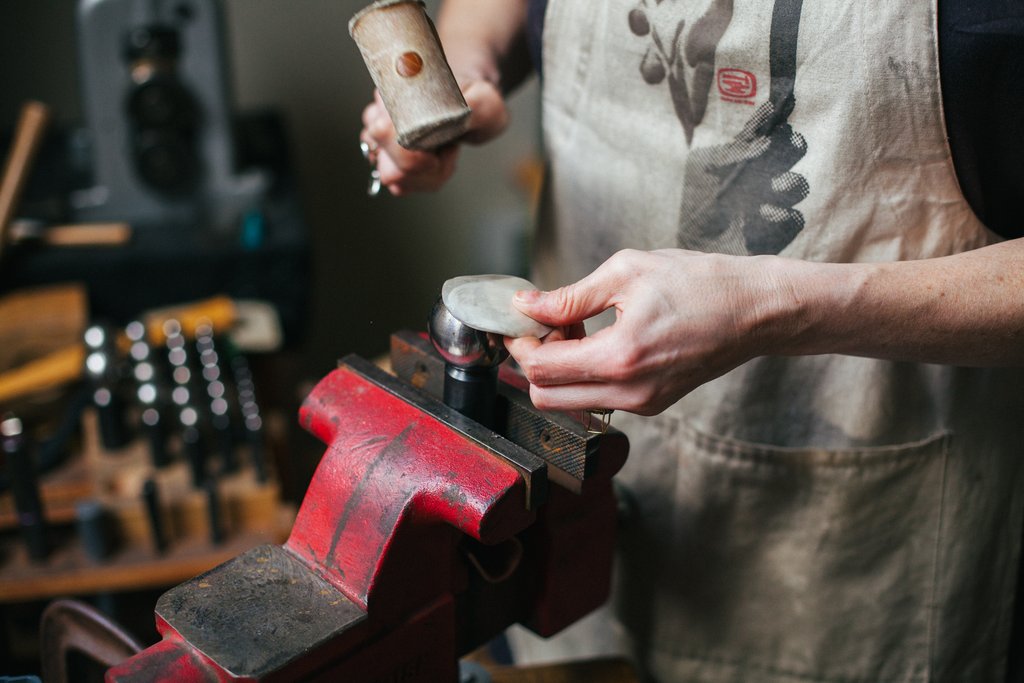
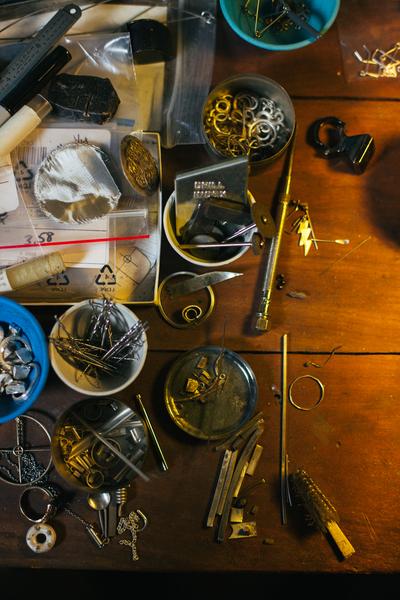
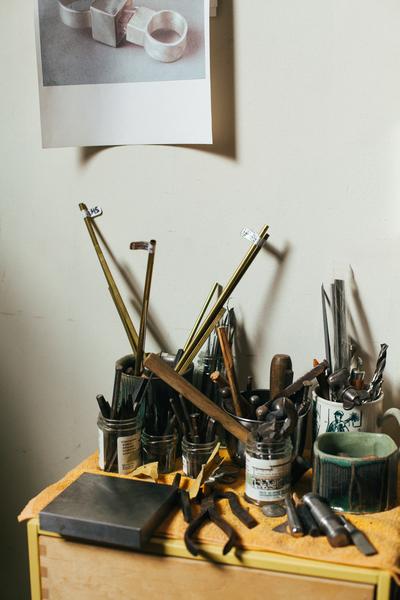
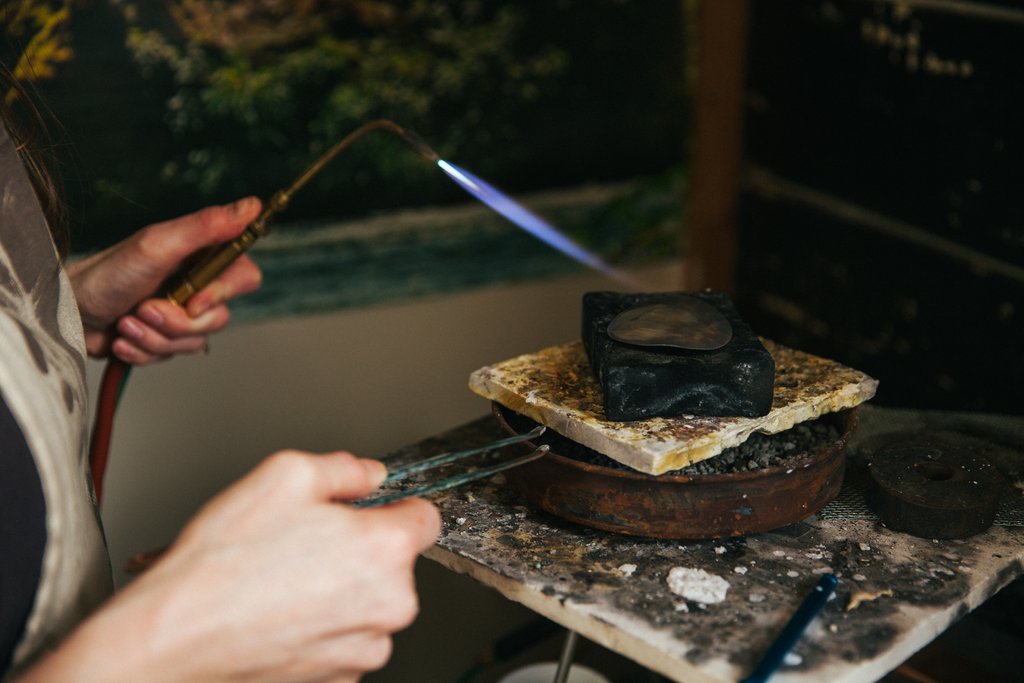
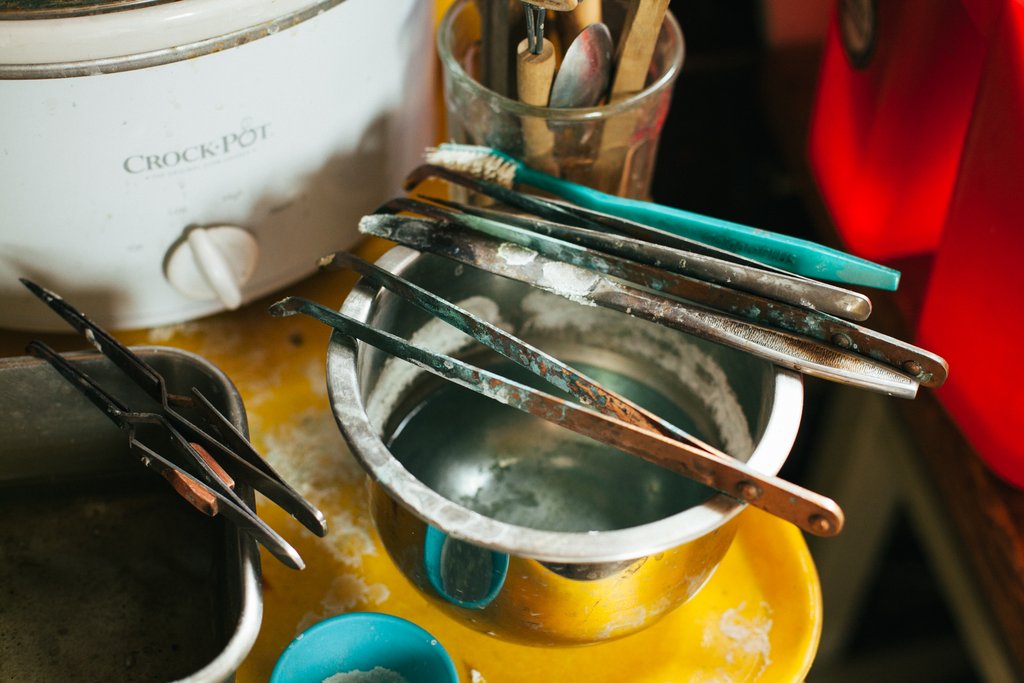
What are you favorite materials to work with/where do you find them?
Well I like metal the most. As a jeweler, you can work with plastic or stone or whatever the heck is laying on the sidewalk. I like metal because it’s complicated and challenging and beautiful. I like the whiteness of fine silver and making sculpture with sterling silver. I’ve been working with gold for a long time—it is a love/hate relationship. Fine gold is amazing, and my Everchanging ring project is so much fun (LINK) and using gold as an alloy to change its properties and make different things. It’s like when you think of different types of steel for different engineering and architectural projects. I think about that sort of thing. I’ve made a lot of work with found objects and plastic toys and weird things I find—I like to work with accidental objects, but I also seek out bits and pieces, which I call Controlled Objects.
Where do I find them?
Well, fine metals: silver and gold I can get from jewelry suppliers and refiners, and I recycle the materials. To get gemstones, you can go to the wholesale suppliers or gem stores. I love science stores too. There used to be a store called the Old Technology Shop on Aurora—I definitely got a bunch of stuff from him.
I also like to happen upon things—when you find an image or have a conversation with people—just bumping into information.
What are you working on?
I am trying to learn how to put a whole bunch of things together that I think about disparately. I have a show in February called Outer Limits at Facere Jewelry Art Gallery. And, of course the Show at Bellevue Arts Museum in April, called Jana Brevick: This Infinity Fits in my Hand.
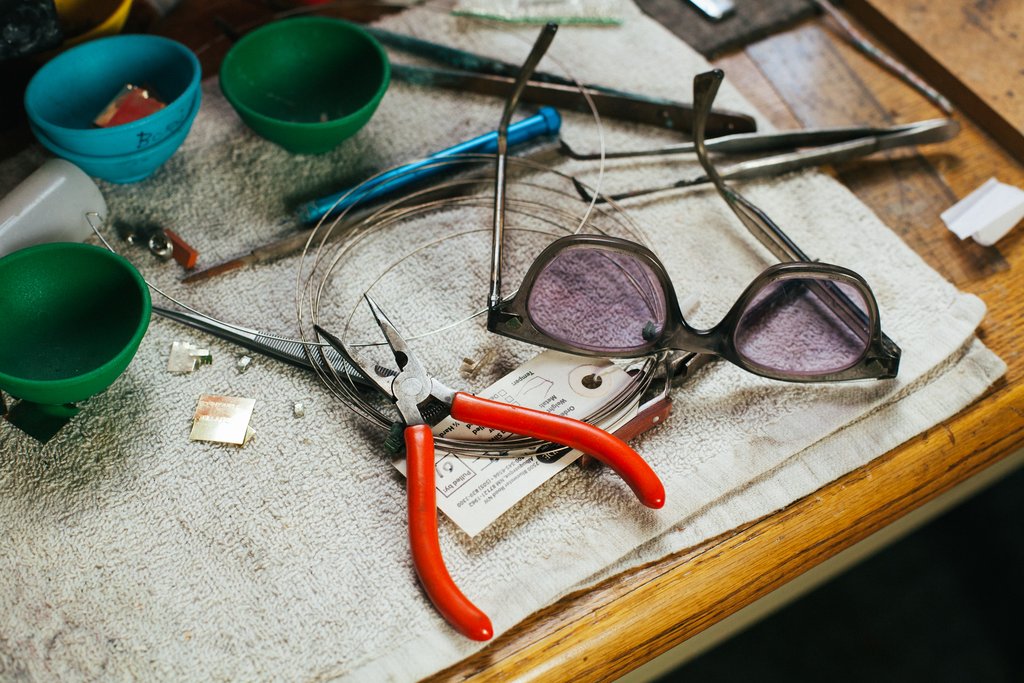
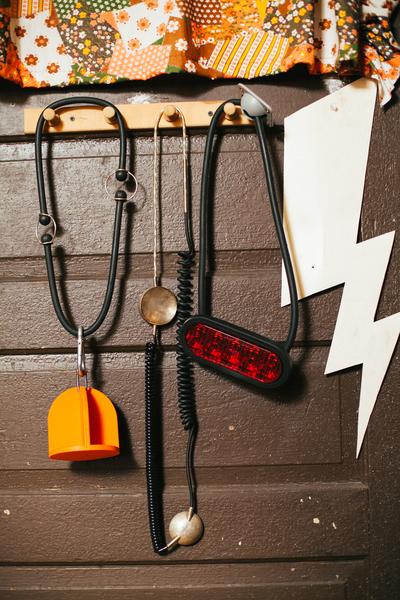
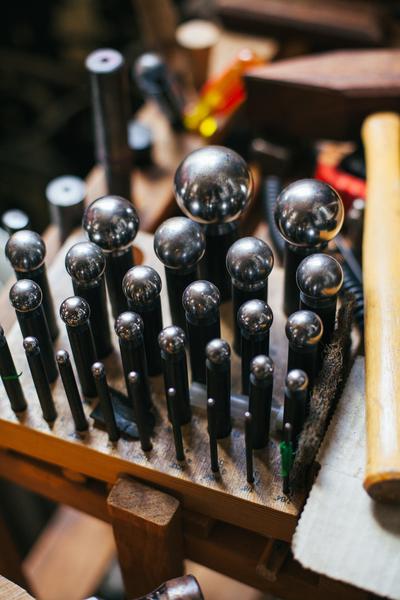
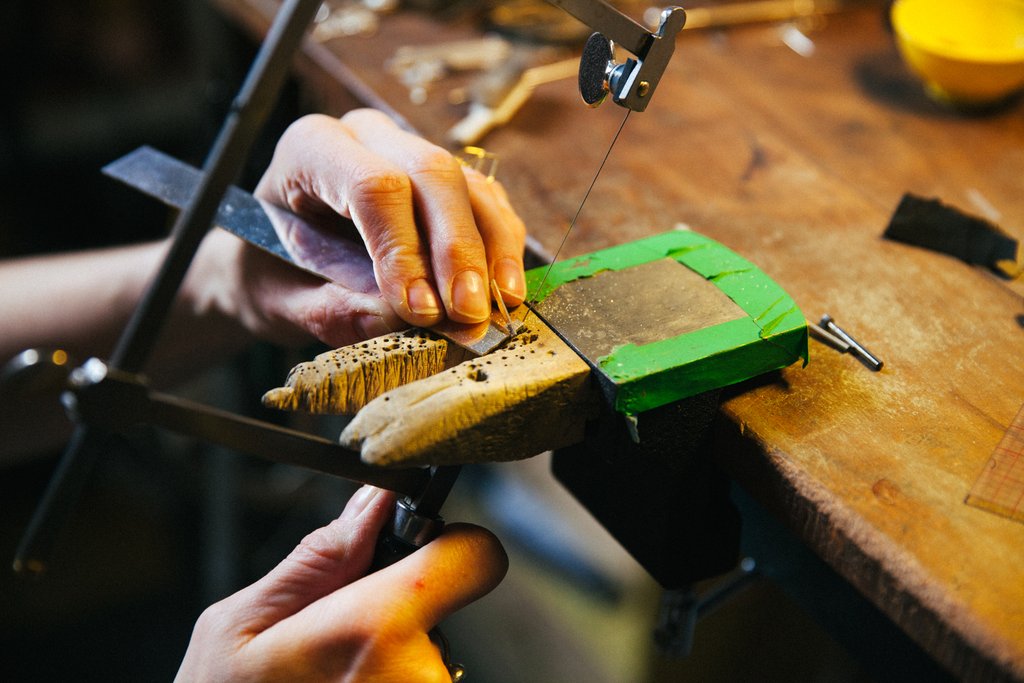
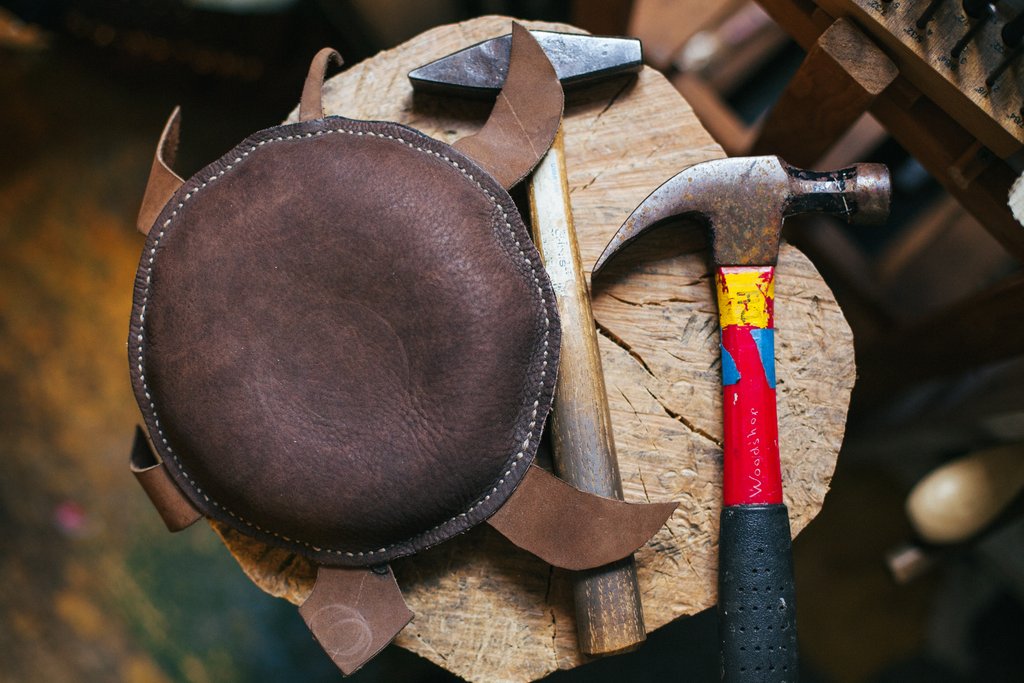
Back to In the Studio
